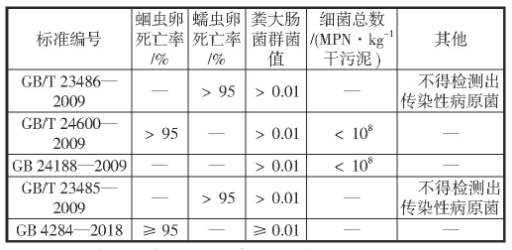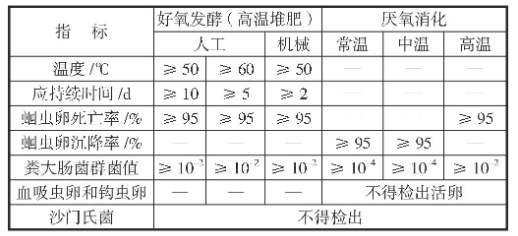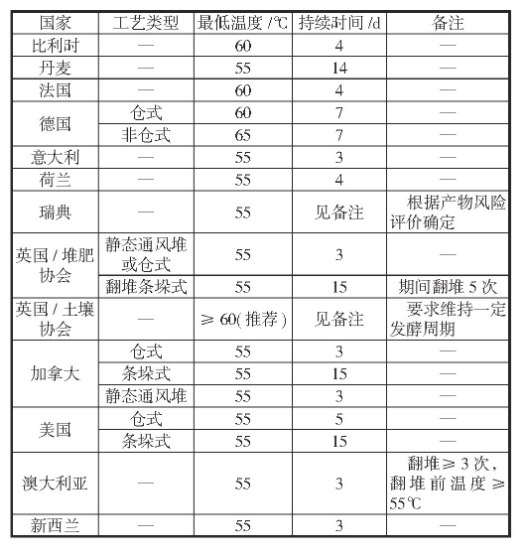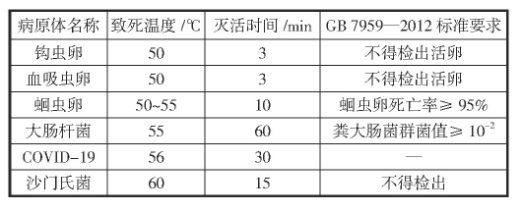As an inevitable product in the process of urban sewage treatment, urban sludge must be treated before it can enter the disposal environment. The treatment and disposal of sludge should follow the principles of stabilization, reduction, harmlessness and resource utilization. However, for a long period of time, the focus of technical attention has been on stabilization, reduction, and resource utilization. Harmlessness is rarely involved, and it is mainly reflected in the content of relevant standards.
During the epidemic of the new crown virus (COVID-19) pneumonia, it is necessary to re-study, review, and discuss the current standards: study the true meaning of harmlessness, examine whether relevant harmlessness indicators can meet the needs of anti-epidemic, and discuss The research and development direction of future standards.
1 Overview of relevant standards for urban sludge
At present, there are 8 existing national standards related to urban sludge: GB/T 23484-2009 “Sludge Disposal Classification of Urban Sewage Treatment Plants”, GB/T 23485-2009 “Mixed Landfill Sludge Disposal of Urban Sewage Treatment Plants” Quality”, GB/T 23486-2009 “Urban sewage treatment plant sludge disposal and landscaping mud quality”, GB24188-2009 “Urban sewage treatment plant sludge mud quality”, GB/T24600-2009 “Urban sewage treatment plant sludge Disposal of land to improve mud quality”, GB/T 24602-2009 “Urban Sewage Treatment Plant Sludge Disposal Separate Incineration Mud Quality”, GB/T 25031-2010 “Urban Sewage Treatment Plant Sludge Disposal Mud Used for Making Bricks”, GB 4284-2018 “Agricultural Sludge Pollutant Control Standards”; in addition to several industry standards and local standards, such as: CJ/T 362-2011 “Urban Sewage Treatment Plant Sludge Disposal of Woodland Mud Quality”, DB11/T 1428- 2017 “Energy Consumption Limits for Sludge Treatment in Urban Sewage Treatment Plants”.
In general, national standards focus on sludge quality standards (7 items), which form the basis of the sludge standard system. The core of the sludge quality standard stipulates the stabilization, reduction, harmlessness and resource utilization of the products after sludge treatment.
Among the national standards for sludge quality, GB/T 24602-2009 “Sild Quality for Separate Incineration of Sludge Disposal in Urban Sewage Treatment Plants” and GB/T 25031-2010 “Soil Quality for Brick Making in Urban Sewage Treatment Plant Sludge Disposal” involves sewage For the utilization of mud as a resource, its treatment method is thermochemical, so there is no special regulation for harmlessness; the other five national standards involve harmlessness indicators, and the main basis is GB 7959-2012 “Hygienic requirements for the harmlessness of excrement” .
2 The connotation of harmlessness
The urban sludge quality standards include “pollutant indicators”. In addition, the mud quality standards related to land use and landfill stipulate “hygienic indicators” (or biological indicators, the same below). Some standards also The “Seed Germination Index” is stipulated.
The pollutant indicators mainly include the concentration of heavy metals and POPs; the hygiene indicators mainly characterize the content of pathogenic microorganisms in the sludge; the seed germination index characterizes the phytotoxicity of the sludge. Broadly speaking, the three are all “harm” indicators. As the above-mentioned pollutant treatment technology is not yet mature, it is generally restricted by management methods; seed germination index, as the basic data of resource-based land use, is used less in harmlessness; and the hygiene index has become the current degree of harmlessness of sludge. The only reference indicator.
The harmless treatment is based on the GB 7959-2012 “Hygienic Requirements for the Innocuous Manure of Stool” cited in the mud quality standard: The innocuous treatment of manure refers to “reducing, removing or killing intestinal pathogenic bacteria and parasite eggs in the feces. Such pathogens can control the breeding of mosquitoes and flies, prevent the spread of odor, and make the processed products meet the requirements of land treatment and agricultural resource utilization.
Therefore, the harmlessness of sludge at this stage refers to the reduction, removal or killing of pathogenic microorganisms in the sludge through appropriate treatment, controlling the breeding of mosquitoes and flies, preventing the spread of odors, and making the treated products reach the goal of land treatment and agricultural resource utilization. Hygiene indicators. Viruses are pathogenic microorganisms, and the killing of viruses is clearly included in the current “harmless” scope. In actual operation, because the temperature of the physical (except mechanical dehydration) and chemical treatment processes is much higher than the requirement for the inactivation of pathogenic microorganisms, the harmlessness of sludge mainly focuses on the biological treatment process, namely anaerobic digestion and aerobic fermentation.
3 Analysis of harmlessness indicators in relevant standards of sludge quality
3.1 The harmlessness index requirements in the sludge quality standard
As mentioned earlier, the five national standards for sludge quality include requirements for harmlessness indicators, which are GB/T 23485-2009 “Mixed landfill sludge from municipal sewage treatment plants” and GB/T 23486-2009 “Urban sewage treatment plant sludge disposal landscaping mud quality”, GB 24188-2009 “Urban sewage treatment plant sludge mud quality”, GB/T 24600-2009 “Urban sewage treatment plant sludge disposal land improvement mud quality” and GB 4284-2018 “Agricultural Sludge Pollutant Control Standard”. The harmlessness index requirements in the national standards for sludge quality are summarized in Table 1.
Table 1 Summary table of harmlessness index requirements in national standards for sludge quality
The above standards involve 4 harmless indicators: Ascaris egg mortality, worm egg mortality, fecal coliform bacteria value, and total number of bacteria. The limits are 95%, 95%, 0.01, 108 MPN/kg dry sludge, respectively; Three of them involve mandatory provisions of two standards (GB 24188-2009 “Sludge Quality of Urban Sewage Treatment Plants”, GB 4284-2018 “Agricultural Sludge Pollutants Control Standards”): Ascaris egg mortality, fecal coliforms Colony bacteria value and total number of bacteria; in addition, in the two recommended standards (GB/T 23486-2009 “Urban sewage treatment plant sludge disposal landscaping mud”, GB/T 23485-2009 “Urban sewage treatment plant sludge In “Disposal of Mixed Landfill Mud”), the requirement that “infectious pathogens must not be detected” is added.
It can be seen from Table 1 that the setting of index items is similar. There is also an implicit common point: although the above-mentioned standards are drafted by different units, they all include GB 7959-2012 “Hazardous Fecal Hygiene Requirements” in the normative reference documents.
3.2 Standard interpretation
As the basis for the source of indicators for the harmlessness of sludge, GB 7959-2012 “Sanitation Requirements for the Harmlessness of Manure” is the latest version, and it is also a mandatory standard for the full text, which has strong guidance.
The standards set sanitary requirements for aerobic fermentation, anaerobic and facultative anaerobic digestion, sealed storage, dehydrated and dried feces and urine, and separate treatment of feces. It also specifically stipulates that “cleaning of manure dregs, dung skins, and biogas digesters , The sludge of various treatment facilities shall be used for agricultural fertilization only after being qualified for high-temperature composting and harmless treatment.” From this, it is also established that the hygiene requirements related to aerobic fermentation are the preconditions for harmless land use (see Table 2).
Table 2 Summary of GB 7959—2012 Hygienic Index Requirements for Aerobic Fermentation and Anaerobic Digestion
It can be seen from Table 2 that land use harmlessness indicators include: Ascaris egg mortality ≥ 95%, Fecal coliform bacteria value ≥ 10-2, Salmonella must not be detected.
3.3 Compost temperature and maintenance time related standards
GB 7959-2012 “Hazardous Manure Sanitation Requirements” also provides regulations on composting process from the perspective of operation and management such as stack temperature and duration, but there is a distance from actual operation and the definition is vague. It is mainly reflected in the composting technical regulations. For example, the Beijing local standard DB11/T 272-2014 “The Operation and Management Code of Domestic Waste Composting Plants” stipulates: “The temperature of each test point of the composting layer in the high-temperature fermentation process is above 55 ℃ and maintained for 5-7 d”; CJJ 52-2014 “Household Garbage Compost Treatment Technical Specifications” stipulates: “The temperature control of the main fermentation layer and the determination of the fermentation time shall meet the following requirements.
1) The temperature of each test point of the stack should be above 55℃ and the duration should not be less than 5 d; or it should reach above 65℃ and the duration should not be less than 4 d.
2) The design main fermentation time should not be less than 5 days. ”
From a global perspective (see Table 3), the harmlessness temperature index for composting is approximately 55-65°C, and the maintenance time varies widely. The shortest time is 3 days, and the longest time is 15 days.
Table 3 Composting temperature and duration requirements abroad
4 Standard discussion
4.1 Whether the current standard requirements can meet the basic needs of the epidemic
According to the “New Coronavirus Pneumonia Diagnosis and Treatment Plan (Trial Version 7)” issued by the National Health Commission: The new coronavirus is sensitive to heat and can effectively inactivate the virus in an environment of 56°C for 30 minutes.
Comparing with the pathogenic microorganisms involved in the GB 7959-2012 “Hygienic Requirements for Stool Harmlessness” standard, COVID-19 is generally similar to the inactivation conditions of roundworm eggs, Escherichia coli, and Salmonella, so it can be inferred that the operation meets the current standards. It can meet the basic needs of this epidemic (see Table 4).
Table 4 Inactivation conditions and standard requirements of pathogenic microorganisms
4.2 Is the harmlessness requirement operable?
This epidemic has forced us to face up to the importance and operability of harmlessness. Such as GB/T 23486-2009 “Urban Wastewater Treatment Plant Sludge Disposal Mud for Landscaping”, GB/T 23485-2009 “Urban Wastewater Treatment Plant Sludge Disposal Mixed Landfill Mud”, “No infectious pathogens shall be detected “Description of the regulations: Standard drafters are aware of risks and do their best to avoid risks.
Hygiene index items should be added to the current standards, and corresponding virus or indicator microbial testing items that can cover the range should be temporarily set up during daily or epidemic periods to effectively implement harmless testing.
4.3 Can technical standards and management standards complement each other?
From GB 7959-2012 to standard practices around the world, it can be shown that technical standards and management standards are complementary. Taking composting as an example, the method of composting, the retention time, the maximum temperature and the degree of harmlessness are closely related. Therefore, it is recommended that the current sludge standards should also consider the use of a combination of technical standards and management standards to increase scientificity and enhance operability.
Of course, standard core indicators, such as the minimum stack temperature, should be adjusted according to actual conditions.
4.4 How to form a consensus in the same industry
The same is the national standard, and the same is the sludge quality standard, but the caliber is still inconsistent. This is also one of the problems that plague the current sludge industry. For example: Should the total number of bacteria be included in the sludge harmlessness index system? The death rate of roundworm eggs or the death rate of worm eggs? …
5 Conclusion
In the field of organic solid waste treatment and disposal, sludge is one of the industries with the highest degree of standardization. But at the current epidemic situation, when you study the current standards, the ways in which the problems are found and the angle of understanding of the problems have changed.
On the one hand, the provisions of the current standards should take the epidemic as an opportunity to sum up experience and lessons, sort out and improve the content of relevant standards, so that they can truly play their due role in harmlessness.
On the other hand, harmlessness is the prerequisite for resource utilization. For sludge, the real harmlessness should pay attention to the natural environment, human beings and resource service objects, that is, pollutant indicators, hygiene indicators and phytotoxicity indicators.
With the development of society and technological progress, the removal of pollutants and the degradation of biological toxicity should also be incorporated into the existing standards and specifications in the future, relying on hygienic indicators, to clear the obstacles to achieve the goal of thorough recycling of sludge, and truly realize sludge. Harmless treatment
Post time: Jul-16-2021



